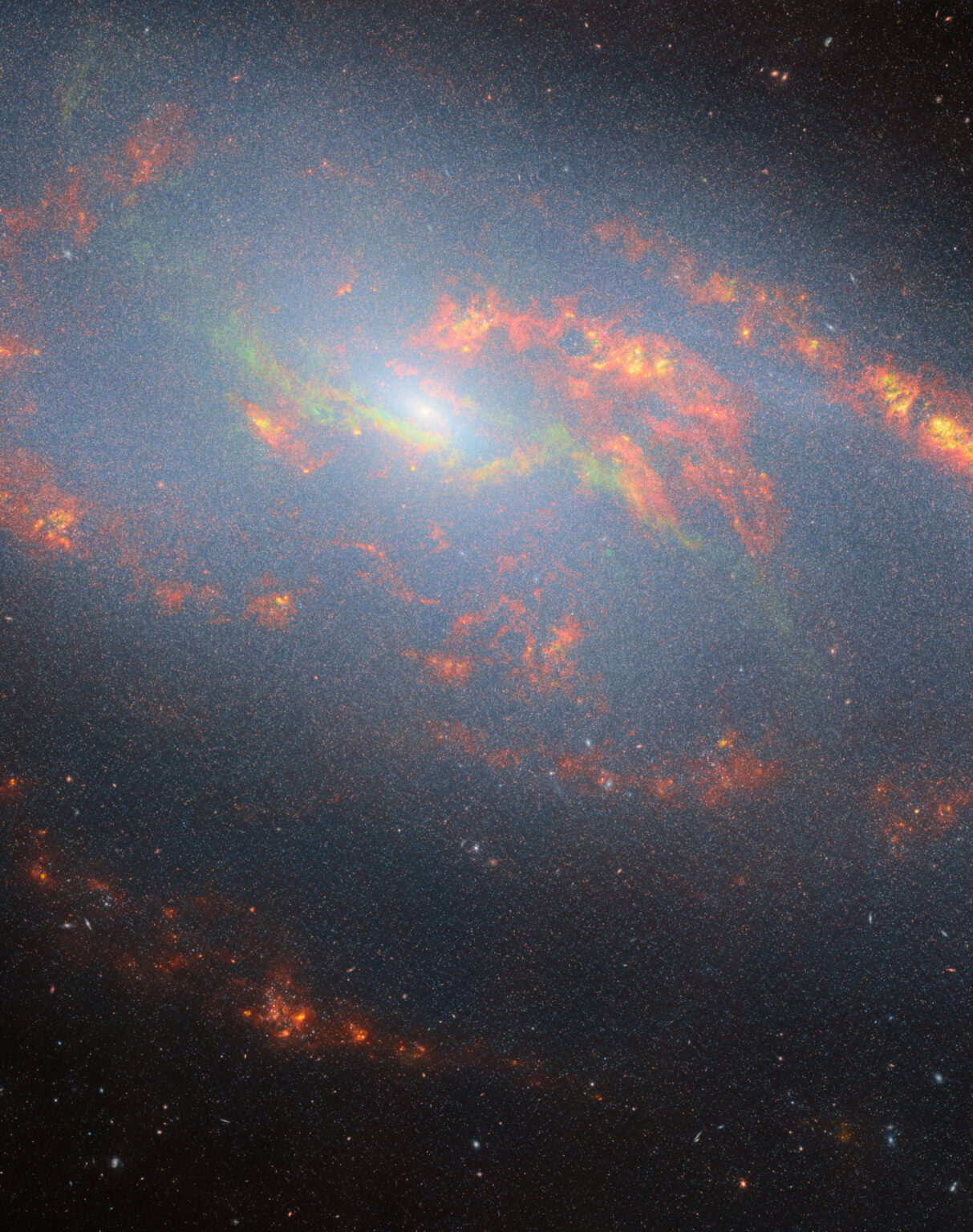Astronomers have published a new colorful image obtained by the James Webb Space Telescope (JWST). It captured the spiral galaxy M 106.

Galaxy M 106 is one of the Milky Way’s neighbors. It is located 23 million light-years away towards the constellation Canes Venatici and is one of the brightest and closest spiral galaxies to us. It is similar in size to the Andromeda Galaxy.
Like most spiral galaxies, M 106 has a supermassive black hole at its center. Its mass is about 40 million times that of the Sun. On the contrary to the black hole at the center of the Milky Way, which only occasionally pulls in gas clouds, the black hole in M 106 actively absorbs matter. As the gas moves in a spiral toward the black hole, it heats up and emits powerful radiation. The galaxy is also home to two supernovae observed in 1981 and 2014.
M 106 has the amazing feature of having two “ghost” spiral arms. They are invisible in the optical range, but can be observed in radio and X-ray wavelengths. Unlike ordinary arms, they are not made up of stars, but of hot gas. Astronomers believe that these additional arms resulted from the activity of the black hole. Most likely caused by the outflow of material as a result of the strong agitation of the gas around it. This created an effect similar to when a wave from the ocean hits a coastal cliff.
M 160 was imaged as part of a program to study active galactic nuclei using a near-infrared camera mounted on JWST. The blue color corresponds to its stellar population, with orange areas indicating warmer and red areas indicating cooler dust. The two “ghost” arms are highlighted in green.
Earlier we told you about how James Webb spotted a black hole shock wave.
According to Esawebb.org


